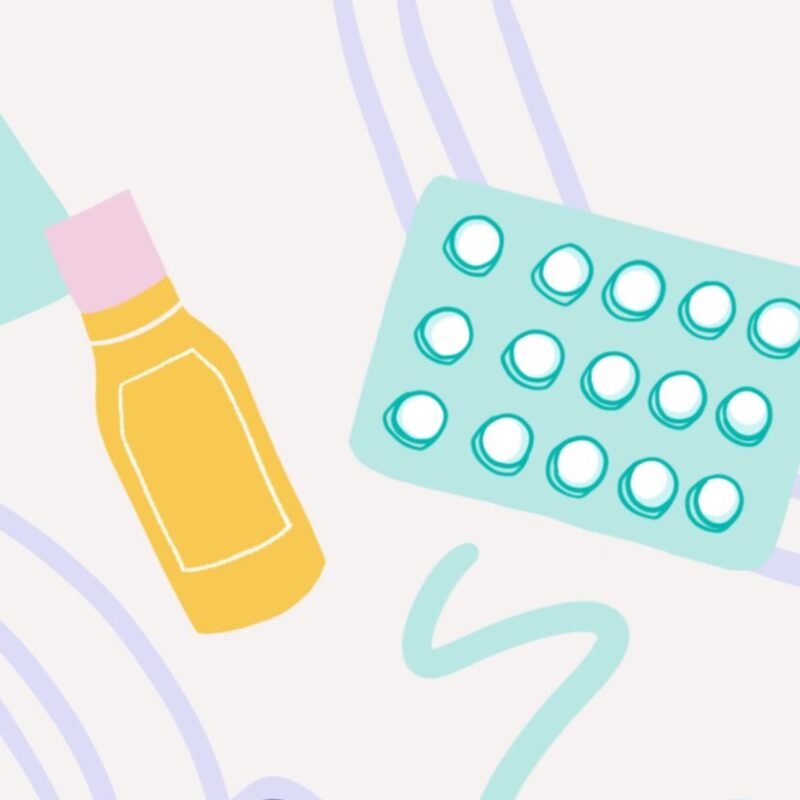Oestrogen-only tablets: what is Premarin and how do I use it?
Premarin tablets are the original form of hormone replacement therapy (HRT). They contain conjugated oestrogen, which is a mix of several types of oestrogen, made from the urine of pregnant horses. Although Premarin has been used for decades, most doctors now prefer to prescribe newer formulations of HRT that are absorbed through the skin, such as gels, patches and sprays.
How does Premarin work?
Premarin is prescribed to relieve symptoms of the perimenopause and menopause, including hot flushes, night sweats, memory problems, vaginal dryness, and mood changes. It works by replacing the oestrogen that is lost during the menopause transition. Premarin is a type of systemic HRT, which means it sends oestrogen into the bloodstream so it can travel through the entire body and relieve a wide range of symptoms.
When and how do I use Premarin?
Premarin is a single tablet, which should be taken at a similar time of day, with or without food. If you’ve had a hysterectomy, Premarin is the only HRT tablet you’ll need to take. However, if you still have your womb you will also need to take a form of progesterone or progestogen, which is usually given as a tablet or via the Mirena coil. This is because taking oestrogen can thicken the cells in the lining of the womb, and there’s a small risk of these cells turning cancerous. There’s no increased risk of cancer of the uterus when you also take progesterone or progestogen. In some types of HRT, the oestrogen and progestogen are combined, but this isn’t the case with Premarin.
What doses does Premarin come in?
It’s available in three strengths: 0.3mg, 0.625mg and 1.25mg. You will usually begin on the 0.3mg dose, but your doctor may recommend increasing this if your symptoms don’t improve after the first three months.
What are the benefits?
Some people find that taking tablets like Premarin is the simplest and most convenient way to take HRT. As well as easing unpleasant menopausal symptoms, taking HRT can also reduce your future risk of osteoporosis, as well as your risk of developing cardiovascular disease.
Who is Premarin suitable for?
For most people, the benefits of HRT outweigh any risks. However, there’s a small increased risk of blood clot or stroke if you take HRT in tablet form, and this is more likely if you are obese, a smoker, or have had a clot in the past. While Premarin is synthetic oestrogen only HRT, there are some newer oral oestrogen tablets that are ‘body identical’ such as Elleste Solo and Zumenon. These are designed to mimic your own body’s natural oestrogen and contain oestradiol. Whilst there remains a small increased risk of blood clot with any oral oestrogen preparation, it is less with the body identical tablets. Your doctor may decide that taking oestrogen via a patch, gel or spray may be a better option for you.
REALTED: what is Elleste Solo and how do I use it
Can I expect any side effects?
It often takes a few months for the the body to adjust to taking HRT, so you may notice some mild side effects. The most common are breast discomfort, leg cramps, change in weight and breakthrough bleeding or spotting. These usually settle over time, but talk to your doctor if side effects persist for longer than the first six months. You may also experience a lower libido when you take HRT tablets. If this becomes an issue, talk to your doctor about taking oestrogen in a patch, gel or spray instead, as these don’t have this effect.
Resources
NHS: hormone replacement therapy
NICE: conjugated oestrogens (equine)





